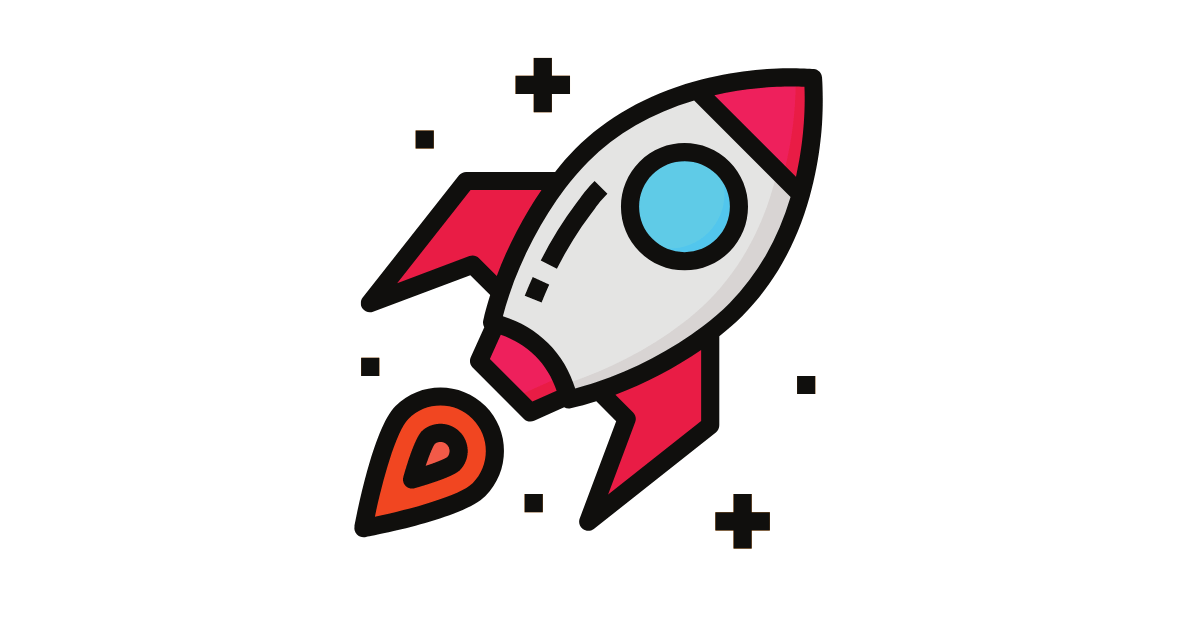👋 Welcome to the 82 new Founders & Finance Pro’s who joined us since last Saturday. If you haven’t subscribed, join 5,000 people getting smarter.
Join the live session: automate compliance & streamline security reviews
Whether you’re starting or scaling your company’s security program, demonstrating top-notch security practices and establishing trust is more important than ever.
Vanta automates compliance for SOC 2, ISO 27001, and more, saving you time and money — while helping you build customer trust.
And, you can streamline security reviews by automating questionnaires and demonstrating your security posture with a customer-facing Trust Center, all powered by Vanta AI.

WELCOME TO ISSUE NO #010
Consulting | Shop | Website | Newsletter | Speaking | Training
📆 Today’s Rundown
Happy Saturday! This week I’ve prepared a one big TOPIC and one freebie just for you.
TL;DR
How SaaS companies are different
4 metrics to make sense of it all
2 key ratios every SaaS company should track
I’ve partnered with my friend David Fortin to bring you an incredible opportunity to excel your career & your business with AI. More details below.
👇 Watch: Build a Profit and Loss Dashboard in Excel by Josh
Just a heads-up - this email’s sprinkled with affiliate links. If you fancy exploring them, it’s a great way to back this newsletter!

Freebie Alert

Financial Modeling Secrets
Grab your FREE eBook below.
This eBook is created to help you comprehend financial modeling, and it’s packed with valuable tips & practical examples.
Here's what you will receive:
Who do what with finance model
Steps to create financial model
Modeling Best practices
Do and don’ts in modeling
Customer acquisition model
3 Statements model
Stratup finance model
and much more!

Ever dreamt of crafting stories, sharing insights, or building a community around your passions?
Now’s the perfect time to start your own newsletter. Whether it's about tech trends, personal journeys, or niche hobbies, your voice matters.
Bring your ideas to life and join a thriving community of creators.
Who knows where your words might take you?

The Essential SaaS Metrics
Disclaimer: Opinions are my own. Not investment advice. Do your own research.
1. How SaaS companies are different
Instead of one-time purchases SaaS customers pay every month (or year) to access software or services via the Internet. Ideally, this business model generates a steady and growing stream of revenue, but it can also present challenges that can threaten the survival of a SaaS company.
2. Using metrics to optimize your SaaS business
It’s critical for SaaS companies to closely track key metrics as the business grows. Data on customer acquisition, lifetime value and churn rates, among other measures, will guide strategic decisions about what improvements need to be made to the business.
3. Find the financing you need
The characteristics of SaaS businesses can make it difficult for entrepreneurs to get the capital they need. Learning what lenders and other financiers are looking for in a SaaS business will improve your chances of getting financing and growing your company.
What is a SaaS company?
A software as a service company:
develops an application and makes it available to customers over the Internet
charges customers a subscription fee to use the application
manages and updates the software to meet user needs and security requirements
3 differences of the SaaS business model
Recurring revenue
Instead of a one-time purchase, SaaS customers pay over a period of time—a monthly or annual fee to use an application. The goal for a SaaS business is to create a growing stream of recurring revenue by attracting new customers and limiting cancellations.
Scalability
Because it’s digital and delivered over the Internet, a SaaS product can be sold to an unlimited number of users with only small increments to cost of goods sold. For SaaS businesses, key expenses are for R&D, and sales and marketing to acquire and keep customers.
Comparable metrics
SaaS businesses have similar characteristics and generate the same types of data. This makes them highly comparable, allowing entrepreneurs, lenders and investors to quickly understand a business and benchmark its performance against others.
Why SaaS companies typically lose money in the early stage
In the early stages, SaaS companies lose money because they must spend on R&D, and sales and marketing. The business then makes the money back as customers pay subscription fees over subsequent months (or years). The company generates negative cash flow until it turns the corner and becomes profitable.
The period of unprofitability typically lasts 12 to 36 months. This can be challenging for entrepreneurs and investors because money must be invested to bring on new customers with the faith that these investments will pay off down the road.

# of months since client acquisition
Higher growth = higher losses in the early days
The more a SaaS business spends to grow its customer base in the early days, the deeper its losses will be. However, if the business is successful in finding and retaining customers, it will eventually be rewarded with a higher rate of growth.

4 metrics to make sense of it all
Metrics allow entrepreneurs, investors and lenders to see how a company is progressing over time. For SaaS businesses, key performance metrics indicate whether a company is meeting its growth targets and where improvements are needed.
Recurring revenue
Recurring revenue is a fundamental measure of how a SaaS business is doing in terms of attracting and retaining customers in a given period—monthly (MRR), quarterly (QRR) or annually (ARR). Tracking recurring revenue allows you to understand how fast the business is growing as well as how much cash is coming in.

Breaking out different sources of new and lost revenue will help you analyze the business and make improvements.

Churn rate
The churn rate reflects the number of customers who cancel their subscription over a given period of time. It’s an important metric for understanding the stickiness of your product. As a business scales up, a high churn rate will increasingly limit its growth potential. A 10% churn rate for 500 customers is only 50 customers, but for 5,000, it’s 500 customers whose revenue must be replaced.


Revenue churn rate
An equally important metric to track is your revenue churn rate. This helps you understand how much recurring revenue (RR) your business has lost due to customer downgrades or cancellations in a given period.

Net revenue retention rate
Bringing it all together is the net revenue retention rate. It gives a comprehensive view of positive and negative changes to existing customer interactions with your company. It is the percentage of recurring revenue that’s retained from existing customers over a period of time, including revenue gained from expansion or reactivation activity offset by revenue lost through subscription downgrades and cancellations.

Negative recurring revenue churn is the holy grail of SaaS businesses. It occurs when additional revenue earned from existing customers through subscription expansion and reactivation exceeds revenue lost to customer churn. Negative revenue retention churn leads to accelerating growth for a SaaS business.
Customer acquisition cost (CAC)
CAC is the total cost of all marketing and sales activities required to find a customer and convert them into a paying subscriber. Used with another metric, the lifetime value (LTV) of a typical customer, CAC allows your SaaS business to understand whether it’s earning more from customers than it costs to acquire them. CAC is an essential metric for determining whether your SaaS business is viable and for making strategic decisions about how to improve it.

What to include in CAC
You should include every expense related to customer acquisition, including salaries, website, marketing tools, advertising, office space and other physical infrastructure for the sales and marketing teams. Once set, your method for calculating CAC should remain the same to allow for tracking performance over time.
Customer lifetime value (LTV)
LTV is the amount of profit you earn from a typical customer over the course of their relationship with you. The longer customers are loyal to your app, the greater your LTV. It is important because SaaS companies spend money to acquire customers then recoup it over the time they are subscribed to the service. Your LTV is directly related to your churn rate and will affect how much you can spend to acquire new customers.

How to increase LTV
Lifetime customer value can be increased through earning more from customers through upgrades and add-ons (account expansion for higher ARPA), reducing expenses (higher gross margin) or lowering the churn rate (customers pay you for a longer time).
2 key ratios every SaaS company should track
LTV/CAC ratio
This ratio compares the value of a new customer over its lifetime to the cost of acquiring that customer. An LTV to CAC ratio that is less than one generally indicates customer lifetime value is not compensating for the cost of acquiring new customers. Rule of thumb is that you should aim for a LTV/CAC ratio greater than three.
Months to recover customer acquisition costs
This ratio indicates how long it takes for a SaaS company to reach positive cash flow and profitability. To be successful, a company will generally need to recover customer acquisition costs within a year. While the best companies recover CAC in five to seven months, the period typically goes beyond a year for start-ups. Months to recover CAC is an indicator of the effectiveness and sustainability of a company’s strategies to attract new customers.



Unlock Your Potential: Master Microsoft Copilot Today!
Enhance Your Skills. The course that helps business professionals go from AI beginners to AI proficient so they can enhance their productivity.
Discover tips, tricks and features you didn't even know existed. This course is designed to help complete ai rookie save hours in their professional tasks.

Earn free gifts 🎁
You can get free stuff for referring friends & family to my newsletter 👇
50 referrals - Cash Flow Models Bundle 💰
10 referrals - SaaS Financial Model 📊
{{rp_personalized_text}}
Copy & Paste this link: {{rp_refer_url}}

FEEDBACK
How would you rate today's newsletter?
If you have specific suggestions or feedback, simply reply to this e-mail.

How can I help you?
Book a Growth Call: Looking to scale your company? Book a growth call with me and let's strategize on how to propel your company to new heights. Click here to schedule your session.
Reserve me for a Keynote Speaking: Elevate your events with my keynote speaking arrangements. Whether it's a conference, seminar, webinar or corporate event, I'm here to engage and inspire your audience with insights into strategic finance. Reach out here to discuss your event.
Dive into 1:1 Coaching: Personalized coaching can make all the difference. Let's work together to navigate the complexities of finance and set you on the path to success. Click here to start your 1:1 coaching journey.
Sponsor an Issue of the Startup Finance: Want to reach a dedicated audience of founders & finance enthusiasts? Consider sponsoring a future issue of the Startup Finance. Contact me here for sponsorship details.
Leave a Testimonial: I would appreciate if you could leave a 5-star rating for this newsletter if you enjoyed it here.
Thanks so much for reading.
Aleksandar




